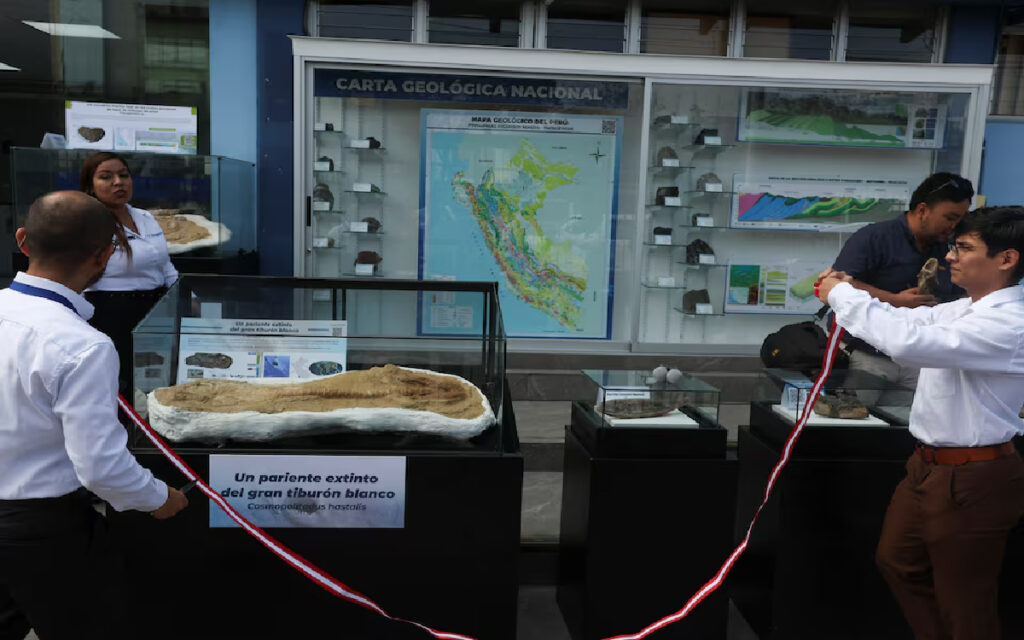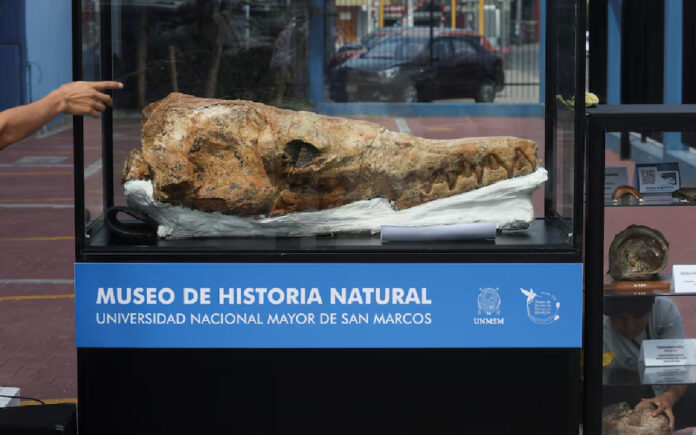Lima: Paleontologists in Peru unveiled a remarkable 9-million-year-old fossil on Monday, revealing the remains of an ancient ancestor of the great white shark. This newly discovered species, Cosmopolitodus hastalis, once inhabited the southern Pacific Ocean, where it preyed on sardines. The fossil, which is nearly complete, was found in Peru’s Pisco basin, about 235 km (146 miles) south of Lima. The region, a hot desert area, is renowned for yielding ancient marine fossils.
The Cosmopolitodus hastalis is believed to be a direct ancestor of the great white shark, though it has been extinct for millions of years. The fossil provides insight into the shark’s size and diet—adults could grow to nearly seven meters (approximately the size of a small boat), and their teeth could reach up to 8.9 cm (3.5 inches) in length. This shark, much larger than many modern predators, likely dominated its environment.
César Augusto Chacaltana, an engineer with the Peruvian Geological and Mining Institute (INGEMMET), highlighted the “exceptional fossilization” of the shark’s remains during a presentation. Researchers showcased the fossilized shark parts in several glass urns, including a jawbone with massive, sharp teeth. Paleontologist Mario Urbina noted that shark fossils, especially those with such completeness, are extremely rare.

Additionally, Urbina shared a fascinating detail: the fossilized remains of sardines were found inside the shark’s stomach, providing evidence of its diet. Since anchovies did not exist during this period, sardines formed the primary food source for these marine predators.
Also Read | Pope Francis Dissolves Catholic Community Mired in Abuse Controversy
This discovery follows other significant fossil finds in the region. In November, Peruvian paleontologists unveiled the fossil of a young crocodile that lived over 10 million years ago. In April of the previous year, researchers displayed the fossilized skull of the largest known river dolphin, which once roamed the Amazon River approximately 16 million years ago.



